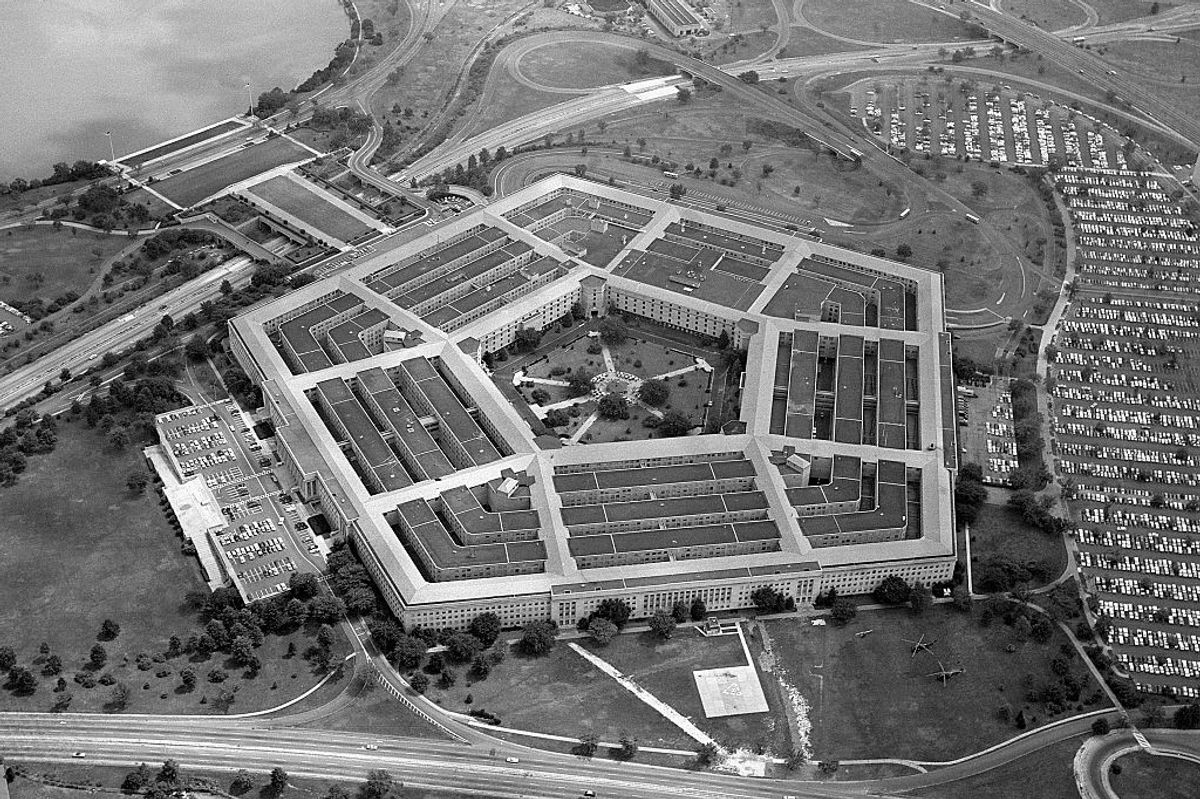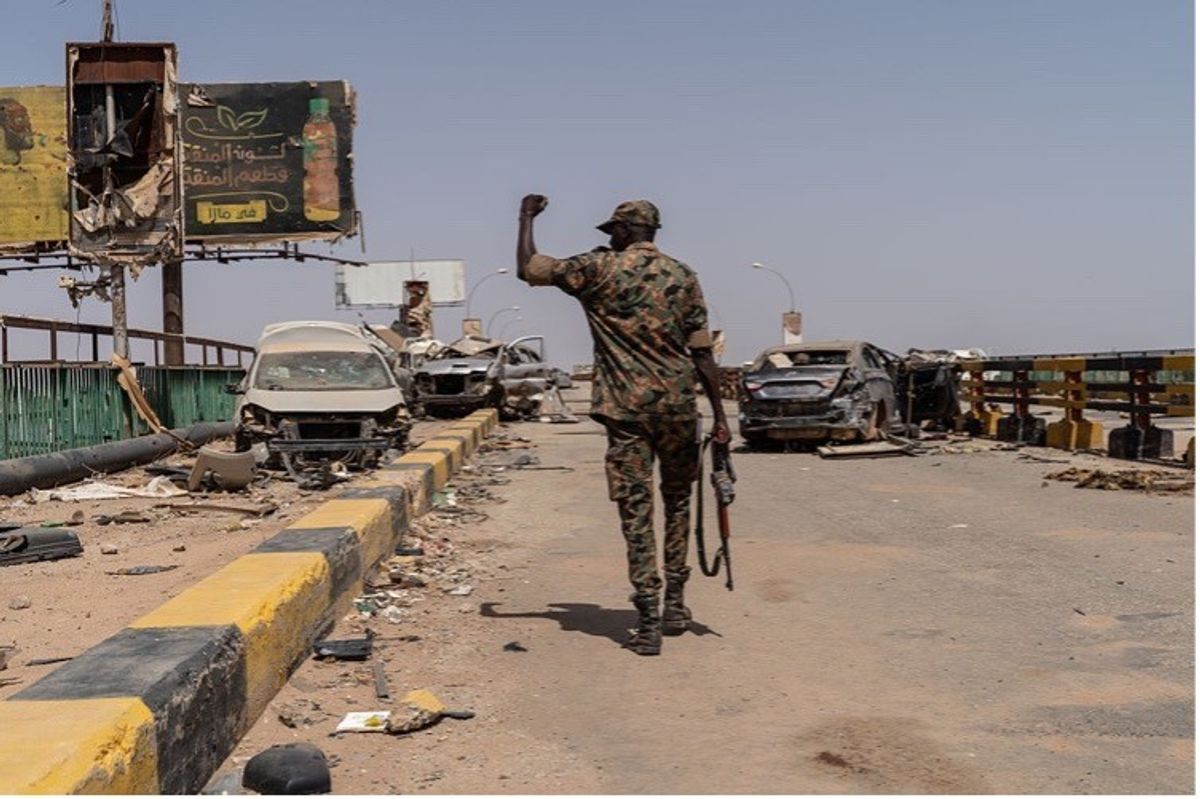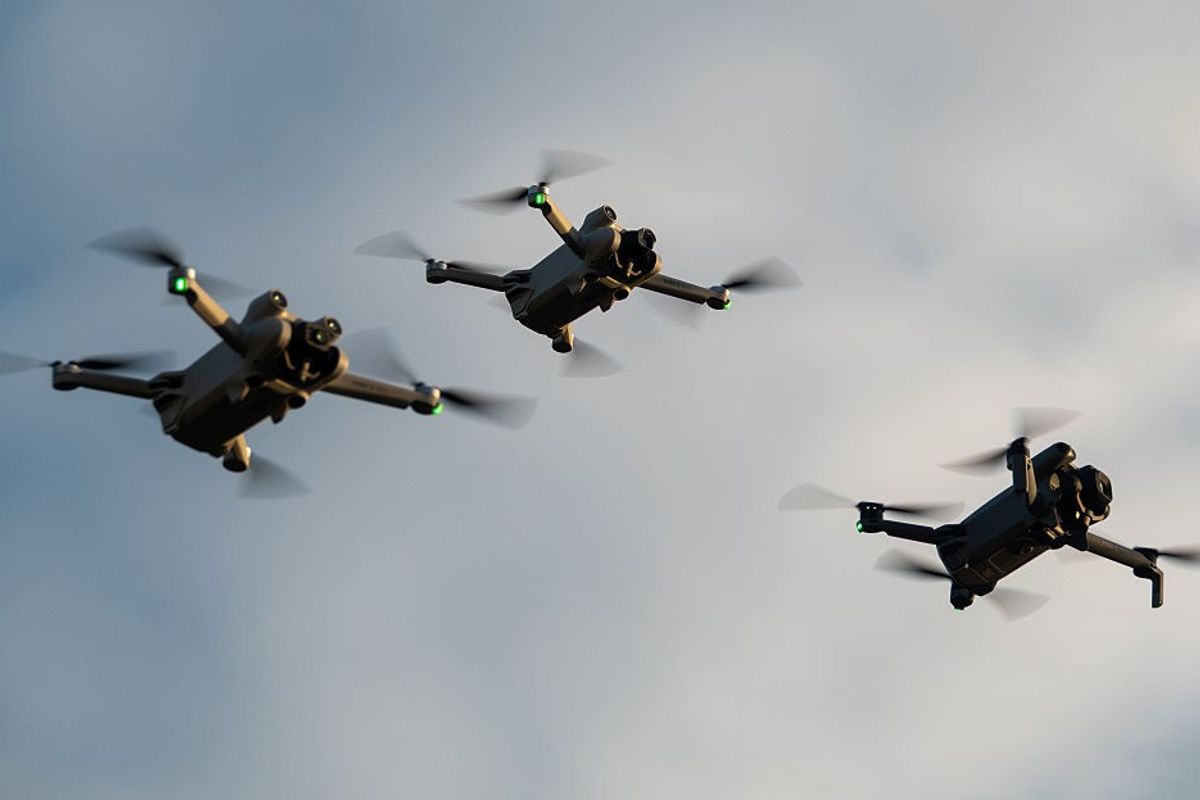CIPHER BRIEF REPORTING – President Donald Trump announced new arms shipments for Ukraine on Monday and threatened Russia with “very severe tariffs” if Moscow fails to reach a peace deal with Ukraine within the next 50 days. Making the announcement from the Oval Office alongside NATO Secretary General Mark Rutte, the president made his frustration with Russian President Vladimir Putin clear.
“I’m disappointed in President Putin,” Trump told reporters in the Oval Office, “because I thought we would have had a deal two months ago, but it doesn’t seem to be getting there.”
The continued threat that Russia poses to Europe is also clear: The nation that launched a war against Ukraine has also moved against Georgia, issued thinly-veiled threats against Poland and the three Baltic nations, and warned NATO repeatedly that its involvement in Ukraine may spark a Russian response.
The threats carry weight; Russia is a nuclear power with a large army and vast natural resources, and President Putin has spoken publicly about restoring the territory – and what he refers to as the “greatness” – of Stalin’s Soviet Union as well as the Russian empire of Peter the Great.
The Russian threat is also the reason why so many European nations are beefing up military spending, and it’s why NATO issued a collective warning at its June summit that “Russia is a long-term threat to the alliance.”
“Wishful thinking will not keep us safe,” NATO Secretary General Mark Rutte said last month, speaking of the Russian threat. “We cannot dream away the danger.”
But Russia is also a badly battered nation. Its military has suffered staggering losses – more than one million soldiers killed or wounded since its February 2022 invasion of Ukraine. Analysts say its economy is in its weakest state in three decades. And more than three years after Putin launched his “special military operation” against Ukraine, Russia appears no closer to achieving its initial war aims than it was when the first troops paratroopers dropped into Kyiv.
All of this begs the question: Whatever Putin’s ambitions, can Russia pose a credible threat to the rest of Europe?
“To launch a large-scale conventional armed incursion into a NATO country is not something Russia would want to do today,” Kurt Volker, a former U.S. Ambassador to NATO, told The Cipher Brief. “They are bogged down in Ukraine. Their forces are not trained and equipped and capable where they want them to be.”
General Philip Breedlove (Ret.), a Cipher Brief expert who served as Supreme Allied Commander for Europe, describes “two realities” about the Russian threat.
“The first reality is that Russia's army is really badly mauled and beaten up right now,” said Breedlove. “It certainly is not ten feet tall, like we used to think. I jokingly say it's about five-foot five these days. So, over the next several years, in a land warfare context, Europe could do just fine.”
But Gen. Breedlove says the second “reality” is that Russia will work hard to rebuild its military might, that it has allies who will help, and that it has less conventional ways to threaten Europe in the meantime.
“In many ways, Mr. Putin's running amok out there,” he said, “in the hybrid war, the below-the-line fight, whatever you want to call that war.”
One view: A battered, beaten-down Russia
By almost any military or economic metric, Russia is in no position today to threaten other nations in Europe. The Institute for the Study of War (ISW) estimates that Russia has suffered between 900,000 and 1.3 million casualties since the 2022 invasion – including 350,000 troops killed in action. (By comparison, in the decade-long war in Afghanistan, the Soviets suffered roughly 50,000 dead and wounded.) The Economist estimates that in Russia’s current offensive, launched on May 1,31,000 Russian soldiers have been killed, for only snail-like advances.
As for the Russian economy, the strains are evident in a growing budget deficit, falling oil revenues, and soaring interest rates. Last week, the main lending rate stood at a record 21%.
Lt. Gen. Ben Hodges (Ret.), who served from 2014 to 2017 as the top U.S. Army Commander in Europe, said that given these realities, he has been surprised by Russia’s staying power in Ukraine.
“Russia, I was certain, would not have made it this long,” Hodges told The Cipher Brief, “given the casualties that they have suffered, and the effects of some of the sanctions on them.”
Volker believes Russia’s weaknesses – economic and military – are as profound as they have been at any other time during Putin’s quarter century in charge.
“They have lost a third of their strategic bombers,” Volker said. “They’ve lost a million people off the battlefield. They’re having to replenish with recently conscripted untrained forces. And they're digging into storage to get World War II era equipment.”
Ambassador Doug Lute, who – like Volker – served as U.S. Ambassador to NATO, said that “Putin's army, which invaded Ukraine in 2022, largely does not exist today.”
Lute notes that while Russia’s 2022 invasion force was the product of a decade-long modernization ordered by Putin, Ukraine has succeeded – with on-and-off help from the West – in severely degrading those forces. Lute is among those experts who believe Russia will need a long time and fresh resources to truly threaten the rest of Europe.
“We should remember that the last time Putin undertook such a modernization, it resulted in the force that failed in 2022,” he said.
Others aren’t so sure.
The Cipher Brief Threat Conference is happening October 19-22 in Sea Island, GA. The world's leading minds on national security from both the public and private sectors will be there. Will you? Apply for a seat at the table today.
The Russia that worries much of Europe
Last month, German Chancellor Friedrich Merz scolded U.S. Senators who he said “clearly have no idea” of the scope of Russia’s efforts to rearm its military.
NATO Secretary General Rutte made the Russian threat the centerpiece of a successful push in June to win pledges from member states to raise their individual defense spending to 5% of GDP. And beyond the spending hikes, Poland and the Baltic states have effectively put their nations on a war footing, fortifying their borders and running military drills that imagine a Russian assault.
"We have developed a strategy to counter any kind of mass land grab or mass land invasion or incursion that would occur," U.S. Army Lt. Col. William Branch, who commands 1,000 U.S. soldiers based in northeastern Poland, told NPR. Lt. Col. Branch's troops have also worked with militaries in Lithuania, Latvia and Estonia. "These countries are actively fighting to retain their sovereignty,” he said. “They're actively fighting to continue to exist because there is a real threat that exists."
Isn’t just Putin’s rhetoric that’s alarming. Russia has shifted its defense industry to a 24/7 posture, signed arms deals with North Korea and Iran, and increased its 2025 defense budget to Cold War-era levels, with an aim to expand its army to 1.5 million troops and establish new units near NATO borders.
In his most recent testimony to the Senate Armed Services Committee, U.S. General Christopher Cavoli, commander of U.S. European Command, was asked whether he believes Putin’s aggression would end after the war in Ukraine was over. His answer was an unequivocal “‘No”’ – based on “a broader pattern in Russian history and certainly on current Russian activity.” He also said he believes Russia will move rapidly to reverse its huge losses in manpower.
“They’ll be able to build as quickly as they want to,” Gen. Cavoli said. “They continue to maintain a conscription…160,000 this year. With those numbers, they will be able to constitute the force size that they choose fairly quickly.”
“I think General Cavoli put this very well,” Liana Fix, a Senior Fellow for Europe, told The Cipher Brief. “He said Russia was in a very bad position, but it can reconstitute its military much faster than we might expect.” That, Fix said, means that while Russia may not threaten NATO nations now, it won’t be long before it does.
“If [Russia] continues on this path of very quick reconstitution of its military with China's help, it will pose a serious threat to NATO allies,” she said. “And that's what they are all concerned about.”
The gray-zone threat
While it may take time for Russia’s conventional military to rebuild, Moscow has been extremely effective launching operations in the gray zone, that area of operations that falls just under the threshold of war. Such operations can include cyberattacks, cognitive warfare campaigns and attacks on sea vessels, for example, with deniability built-in.
“There are other Russian threats aside from a ground invasion that NATO allies, especially those on the Eastern flank, ought to be alert to,” Lute said. “These hybrid attacks or gray-zone attacks also are very much in NATO's window.”
The Cipher Brief has reported extensively on these “gray-zone” tactics, and officials have warned recently that the Kremlin is only expanding these efforts.
Last week, details of a plot to kidnap the Russian dissident Yevgeny Chichvarkin in London and burn down his Michelin-starred restaurant were disclosed in court proceedings. According to officials, the plotters were identified after setting fire to a Ukrainian-owned warehouse in England, and their investigation found that the group had been directed via Telegram accounts linked to the Russian mercenary Wagner Group.
“Russia is conducting hybrid attacks against NATO countries every day,” Volker said. “Cyberattacks, targeted assassinations, arson, political interference, disinformation, bribery, corruption, you name it. They do this all over the place. So, they are very active in attacks, just not the type of conventional attack that we often think about.”
Being a Subscriber+Member has its perks. Join us on Wednesday, July 23 for an exclusive virtual session on Gray Zone Operations, led by former Under Secretary of Defense for Intelligence Dr. Michael Vickers and former senior CIA Officer Dave Pitts. Subscriber+Members receive details and links to register via email. Just another reason why it pays to be Subscriber+Member.
What comes next
Assessments on just when Russia’s military – and economy – could bounce back range from next year to the mid-2030s. The Danish Defense Intelligence Service (DDIS) issued an analysis of the Russian threat earlier this year, offering three scenarios – all of them starting with an end to the Ukraine war, and the assumption that Russia cannot currently wage war against multiple nations.
Within six months of the guns going silent in Ukraine, the DDIS said, Russia would be able to wage a local war with a bordering country. In two years, it would have the capacity to launch a regional war in the Baltic Sea region. And within five years, it could launch a large-scale attack on Europe.
"Russia is likely to be more willing to use military force in a regional war against one or more European NATO countries if it perceives NATO as militarily weakened or politically divided," the report said. "This is particularly true if Russia assesses that the U.S. cannot or will not support the European NATO countries in a war with Russia."
Germany’s defense chief told the BBC last month that Russia would be militarily ready to attack within four years – and perhaps sooner than that.
“If you ask me now, is this a guarantee that's not earlier than 2029?” General Carsten Breuer commented, “I would say no, it's not. We must be able to fight tonight."
In all these assessments, there are variables that would alter the calendar: the global price of oil – upon which Russia depends for revenue; the long-term loyalties of Russian allies, China in particular; and the mood of U.S. President Donald Trump, who is expressing frustration with Putin while offering more military aid to Ukraine.
All those interviewed for this story made the point that robust and continued Western support for Ukraine – and sanctions against Russia – would prove critical in determining when Russia is truly able to menace other European nations.
“All of this really turns on our credibility,” Gen. Breedlove told us. “I think Mr. Putin senses weakness and he knows what to do in the presence of weakness.”
Lt. Gen. Hodges said that the most important determinant of Russia’s ability to threaten other nations in Europe will be how it ultimately fares in Ukraine.
“What I am sure of is that if Ukraine capitulates or fails, or if we turn our back on Ukraine and Russia is able then to take a couple of years to rebuild and fix what is broken, they will be knocking on the door of Moldova and on the door of Latvia or any other Baltic nation,” Hodges said.
“That’s because their objective is to break the alliance, to show that NATO and its member nations are not really willing to fight against Russia over a piece of Estonia, for example, or a piece of Latvia. To make sure that the Russians never make that terrible miscalculation, we have to get back to where we were in the Cold War days, of spending what's necessary, of being prepared so that you can have another 40, 50 years of no war with Russia.”
Are you Subscribed to The Cipher Brief’s Digital Channel on YouTube? There is no better place to get clear perspectives from deeply experienced national security experts.
Read more expert-driven national security insights, perspective and analysis in The Cipher Brief because National Security is Everyone’s Business.













